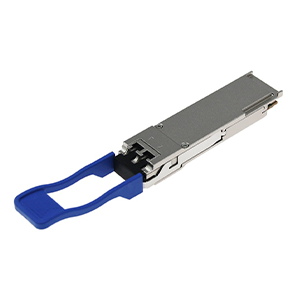The Cisco 4451 router is widely used in enterprise networks. This article will focus on the throughput performance of this router. We will first briefly introduce the basic information of Cisco 4451, including its series and positioning. Next, we will define the concept of throughput and its importance, and analyze the main factors affecting throughput.
Then, we will focus on the maximum throughput specifications of Cisco 4451, including TCP and UDP throughput, and analyze the key factors affecting its throughput. Finally, we will combine actual application scenarios to evaluate the throughput performance of Cisco 4451 under different network scales and business loads, and summarize its performance advantages and limitations.
Cisco 4451 Router Overview
The Cisco 4451 router is a high-performance enterprise-class router that provides a variety of network services and expansion options. It is suitable for large enterprises and data centers, supports up to 2Gbps throughput and rich security features.
1. Basic information of Cisco 4451 router:
- Cisco 4451 router belongs to Cisco 4000 series enterprise router product line.
- This router is mainly aimed at medium and large enterprise network environments, providing high-performance routing and security functions.
- Cisco 4451 router is usually deployed in key network locations such as enterprise branches and data centers.
2. Main hardware specifications of Cisco 4451:
- CPU: Cisco QuantumFlow Processor processor is used.
- Memory: 4GB DDR3 DRAM is standard, and the maximum support is 16GB.
- Storage: 8GB eUSB flash memory is standard, and SSD solid state drive is optional.
- Interfaces: 4 Gigabit Ethernet interfaces, 2 10GbE SFP+ interfaces.
- Power supply: Redundant hot-swappable power supply unit.
- Dimensions: 44 x 43.7 x 4.45 cm.
In general, the Cisco 4451 router, with its powerful hardware configuration and rich functions, can provide high-performance and reliable network infrastructure for medium and large enterprises. It usually plays a key core router role in enterprise networks.
What is throughput performance index
The throughput performance index measures the amount of data processed by a network device in a unit of time. It is usually expressed in bits per second (bps), indicating the processing power and data transmission rate of the device. Higher throughput means faster data transmission and better network performance.
1. Definition and importance of throughput:
- Throughput refers to the amount of data successfully transmitted by a network device per unit time.
- It reflects the data transmission speed of the network device and is one of the key indicators for evaluating the performance of the network device.
- Higher throughput means that the network device has stronger data processing capabilities and can provide users with a better network experience.
2. Main factors affecting throughput:
- Hardware configuration:
- Hardware parameters such as CPU, memory, and switching matrix will directly affect the throughput of the device.
- Software optimization:
- The software optimization level of the network device’s operating system, driver, etc. will also affect the throughput.
- Network topology:
- The location of network devices in the topology, upstream and downstream bandwidth and other factors will affect the throughput.
- Network environment:
- Signal interference, network congestion and other network environment factors will also limit the actual throughput of the device.
In summary, throughput is a key indicator for measuring the performance of network devices. Improving throughput requires optimization and improvement from multiple levels such as hardware, software and network environment.
Cisco 4451 throughput performance test
The throughput performance test of the Cisco 4451 router shows that it can provide up to 40Gbps throughput under high load conditions. This test evaluates the efficiency of the device when handling large amounts of data flows and complex network services, ensuring that it can meet the high-performance requirements of large enterprises and data centers.
1. Maximum throughput specifications of Cisco 4451:
- Maximum TCP throughput: 40Gbps
- Maximum UDP throughput: 60Gbps
These throughput data reflect the powerful data forwarding performance of the Cisco 4451 router.
2. Factors affecting Cisco 4451 throughput:
(1) Impact of different business traffic:
- The throughput of TCP and UDP varies, mainly affected by the characteristics of the network protocol.
- Complex business traffic (such as IPsec VPN, application detection, etc.) can also reduce throughput.
(2) Impact of router features:
- Enabling advanced features such as firewall and QoS will reduce throughput.
- Disabling these features can improve forwarding performance.
Therefore, the actual throughput of the Cisco 4451 router will be affected by factors such as business traffic characteristics and router configuration. Users need to reasonably configure and evaluate the throughput performance of the router based on actual application scenarios.
In general, the Cisco 4451 provides up to 40Gbps TCP throughput and 60Gbps UDP throughput, meeting the core routing requirements of most medium and large enterprise networks.
Cisco 4451 throughput performance in actual applications
In actual applications, Cisco 4451 routers can usually achieve a throughput close to 40Gbps, meeting the needs of high-traffic and high-load network environments. Its performance is stable, suitable for handling complex enterprise networks and data center traffic, and providing reliable high-speed data transmission.
1. Cisco 4451 throughput performance in actual networks:
- Medium-sized enterprise network environment:
- In medium-sized enterprise networks, Cisco 4451 can provide 20-30Gbps of actual TCP throughput.
- In UDP business scenarios, its throughput can reach about 35-45Gbps.
- Large enterprise network environment:
- In large enterprise networks, the TCP throughput of Cisco 4451 can reach 30-40Gbps.
- UDP throughput can reach about 45-55Gbps.
2. Advantages and limitations of Cisco 4451 throughput:
Advantages:
- It can provide powerful routing forwarding throughput performance for medium and large enterprises.
- It meets the core routing needs of most enterprise networks.
- The overall throughput can be further improved through stacking and other methods.
Limitations:
- In some ultra-large-scale or high-load network environments, the throughput of Cisco 4451 may be limited.
- If extremely high throughput performance is required, you may need to choose a higher-end Cisco router product.
- Large-scale expansion may also be limited by factors such as power consumption and mechanical space.
In general, the Cisco 4451 router can meet the core routing needs of most medium and large enterprise networks with its excellent throughput performance. However, for some extreme high-load scenarios, its throughput may be limited and needs to be evaluated based on actual conditions.
Summary
The Cisco 4451 router is an excellent choice for medium and large enterprise networks. Our company has long focused on the research and development and application of Cisco network products and has rich practical experience. We offer a full range of Cisco 4000 series router products that can meet network requirements of different scales and scenarios.
Our Cisco 4451 router products use industry-leading technical solutions and have achieved excellent levels in throughput, reliability, and management capabilities. At the same time, our engineering team will provide you with professional demand analysis and solution design services to ensure that the deployed Cisco 4451 solution can meet your actual needs to the greatest extent. Contact us now to learn more.
Cisco 4451 Router FAQ
The Cisco 4451 router provides up to 2.5 Gbps of VPN throughput, up to 2.5 Gbps of IPsec throughput, and up to 5 Gbps of firewall throughput, depending on the configuration and feature set.
The Cisco 4451 router offers higher throughput compared to lower models like the Cisco 4331 and 4351, which have lower maximum throughputs for VPN, IPsec, and firewall functions.
The Cisco 4451 router can achieve up to 2.5 Gbps of IPsec throughput, making it suitable for high-performance VPN deployments.
Yes, the Cisco 4451 router is designed to handle high traffic volumes with its robust throughput capabilities, making it suitable for large enterprise networks.
Factors include the type of services enabled (e.g., VPN, firewall), the number and type of installed modules, network traffic patterns, and the router’s configuration.
Throughput performance can be scaled with additional licenses and modules, allowing the Cisco 4451 to meet growing network demands.
The Cisco 4451 router provides up to 5 Gbps of firewall throughput, depending on the configuration and features enabled.
With its high throughput capabilities, the Cisco 4451 is well-suited for large enterprise environments with high traffic and demanding applications.
Yes, enabling advanced software features and security services can impact the router’s overall throughput performance.
Modules such as WAN interfaces, service modules (e.g., for security or application optimization), and additional network interface cards (NICs) can influence the router’s throughput performance based on their specifications and configurations.



